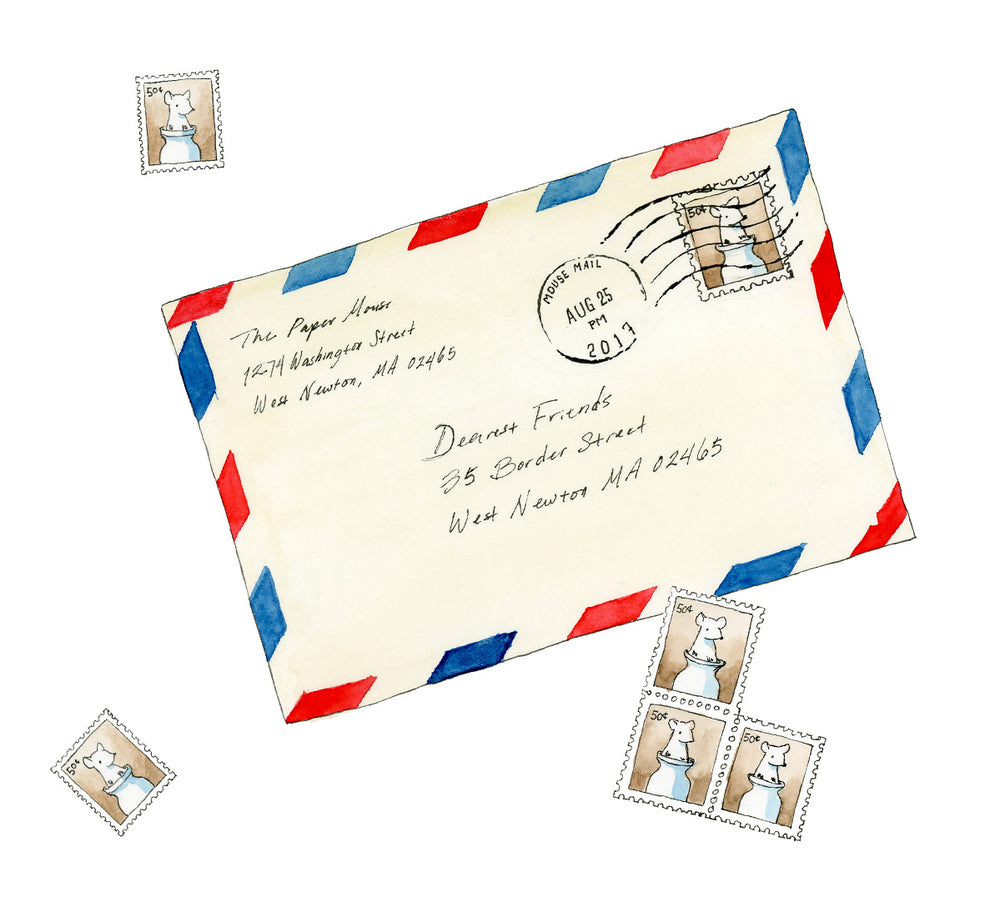Getting Organized on Paper

One of the great lures of a new notebook is the promise of organization it floats before us. We’ve all been drawn in by this promise before. “This is the day/week/year I’m going to get organized,” we proclaim, as we pick out a crisp new notebook that seems destined to change our life. A month later, we find we haven’t used half the features of our new notebook or we’ve gotten frustrated and overwhelmed by our fabulous new system—or we never even got started.
But writing on paper really is an effective way to stay organized, remember important details, and consolidate new knowledge—and good stationery can help us do it. With a little savvy and self-awareness, we can find and create systems that work for us. There are a lot of notebooks out there and there’s some trial and error in finding what works best for you, but the following strategies will help you organize your notes with greater success.
First, consider page ruling
A notebook’s ruling is more than just an aesthetic consideration (although we understand what it means to fall in love with a beautifully designed page!). Choosing the right ruling helps us organize a page more effectively.
Begin by asking yourself a few questions. What kind of notes do you usually take? Do you make a lot of lists, draw little sketches, write long journal entries, or scrawl all over the page? Don’t worry about what you think your notes should look like—just think about how you naturally write. The most effective notebook will be one that complements your natural tendencies.
Here are some advantages of different page rulings.
- Lined. It may sound obvious, but lined notebooks are excellent for keeping you on track if you write a lot. They’re helpful for keeping a page neat if you write long journal entries, copious meeting notes, or dense school notes, for instance. If you take notes using a traditional outline system, with main topics and subtopics, lines make it easy to stay organized. Lined pages are most logically used from top to bottom and side to side, so their strength is in organizing written words rather than charts, sketches, or other visuals.
- Graph. Many of us think of graph paper only in the context of math, drafting, or other technical work—and indeed it’s ideal for those functions—but it’s also useful for so much more. The strength of graph paper is its combination of structure and flexibility: it lets you utilize any part of the page, but still provides solid lines to keep writing neat and contained. The lines also make it easy to divide a page vertically or horizontally, making it ideal for writing lists and drawing charts, boxes, and calendars. Graph paper is also great for the Cornell system of note-taking, in which you create a wide margin for writing key points and commentary on your notes and a summary box at the bottom of the page.
- Dot Grid. Technically a type of graph paper, dot grid paper has the same helpful structure as a graph page but with a more open-ended feel that gives it a lot of versatility. It’s easy to connect the dots with a ruler to create lines or boxes, and the dots also provide guidance for writing neatly, but they are easy to disregard when you want more freedom. Dot grid pages are ideal if you want the versatility of choosing how each page is structured—one reason they’re so popular with bullet journalers, who create different layouts on each page. The lightness of a dot grid is also nice if you like to mix sketching and writing.
- Blank. With no ruling whatsoever, blank pages are the most open-ended of all. If you’re a visual thinker and find that lines and dots are only noise on the page, blank pages are a good alternative for taking notes: creating mind maps and flowcharts, drawing arrows and diagrams, and combining writing and drawing in a way that works for you.
Notebook structure makes a difference
In addition to a notebook’s ruling, the structure of the notebook can help or hinder you when you’re trying to organize your notes. Here are some structural features to consider.
- Headers. When you take notes, do you like to organize your pages by topic? Some notebooks, like the Mnemosyne and Logical Prime, have pages with built-in headers for the date and subject. These are useful for organizing meeting notes, class notes, or other topic-based note-taking.
- Index and page numbers. Do you often refer back to your previous notes? In addition to headers, an index or table of contents makes this easier. Some notebooks, like the Leuchtturm notebook, Blackwing Slate, and Hobonichi planner, have an index and page numbers built in. (You can also create your own if your preferred notebook doesn’t come with these features.)
- Notebook division. If you’re writing about multiple subjects or taking notes over the course of the year, a notebook with built-in divisions (like the Mishmash notebook, Hobonichi Plain Grid notebook, or Hobonichi planner) can make it easier to find your place. You can also create structure in your notebook by adding clip-on or sticky tabs like these Densho Tabs, Sticky Tabs, Brass Clips, or Index Stickers.

Tips for organizing on the page
Organizing our notes ultimately comes down to the individual page, and there are lots of visual cues you can use to make a page easier to read and search through. Even if you don’t consider yourself a visual thinker or artistically inclined, you can benefit from using visual cues.
- Headers. Writing a header at the top of a page or a section of notes makes it much easier to find later. Try to make headers stand out visually as much as possible, so they catch your eye when you’re flipping back through your notes: highlight them, use rulers or stencils to draw boxes around them, or write them larger or in a different color than the rest of your notes so they jump out visually. Do the same with subheadings so you can easily scan a page for main ideas.
- Margins. We tend to ignore the margins of our notes (except for doodling), but they can be used to our advantage. Try drawing extra-wide margins in your notebook and then write key words or draw icons next to long sections of notes, highlighting them so they stand out. Or use margins to create timetables and checkboxes to stay organized.
- Think inside the box. Creating a boxed-off section on the page is a great way to highlight a key idea that you want to stand out. You can draw boxes or use colorful sticky notes to add visually distinct boxes on the page. Try using boxes to write summaries of the main takeaways on a page, so you can see a quick recap when you’re reviewing your notes. Or use them to frame checklists with important next steps, so you can easily find any open tasks you need to complete. Experiment with putting boxes in the upper or lower corner of a page or boxing off a section at the bottom so they’re always in the same place when you flip through your notebook.
- Use the edge. In addition to the main part of the page, you can also use the edges of your pages to make it easier to search through your notebook. Try coloring the corner or edge of each page to correspond with a particular subject, for instance, so it’s easy to find that subject when you’re flipping through your notebook. You could also color the corner of a page or cut the corner off when you’ve completed all the tasks on that page, so it’s easy to find pages with outstanding tasks.
Do you have a favorite notebook ruling or note-taking technique that helps you stay organized? Leave us a comment below!



Leave a comment